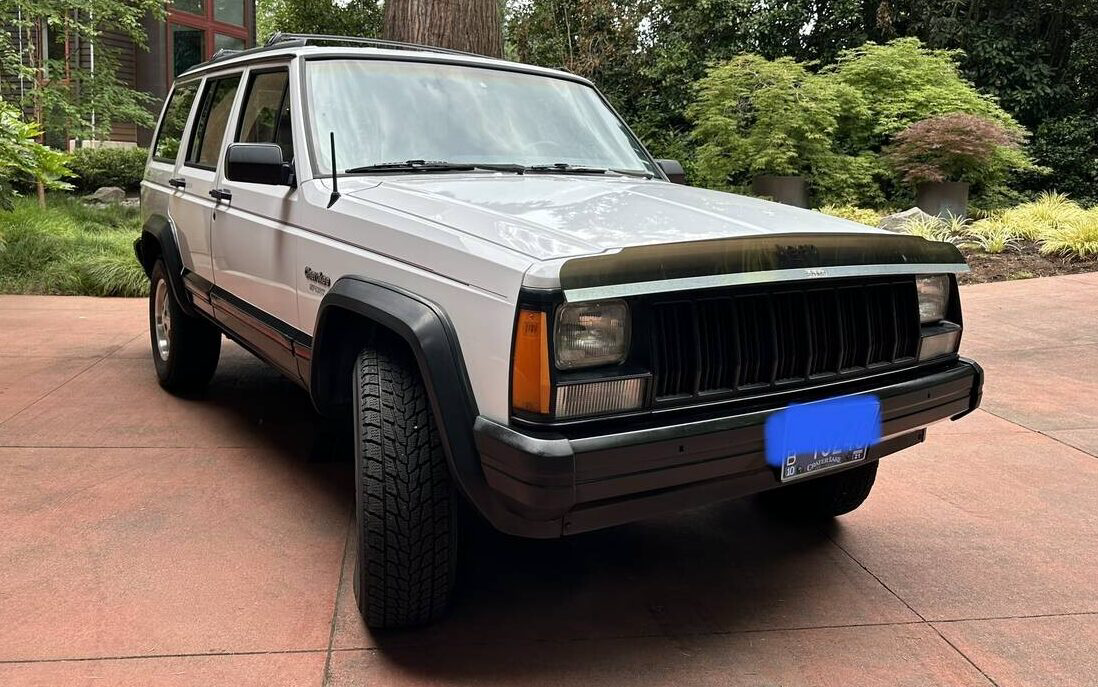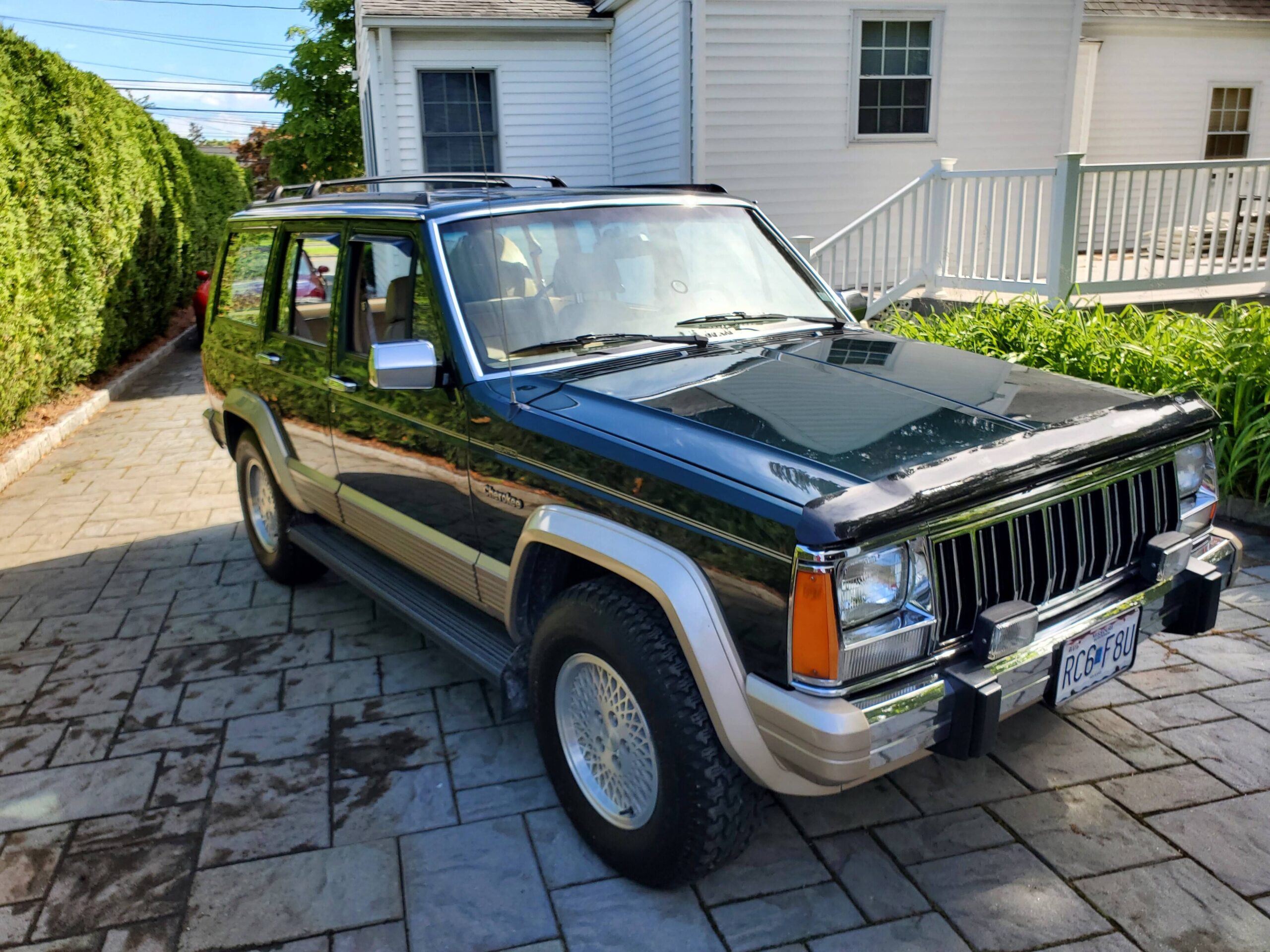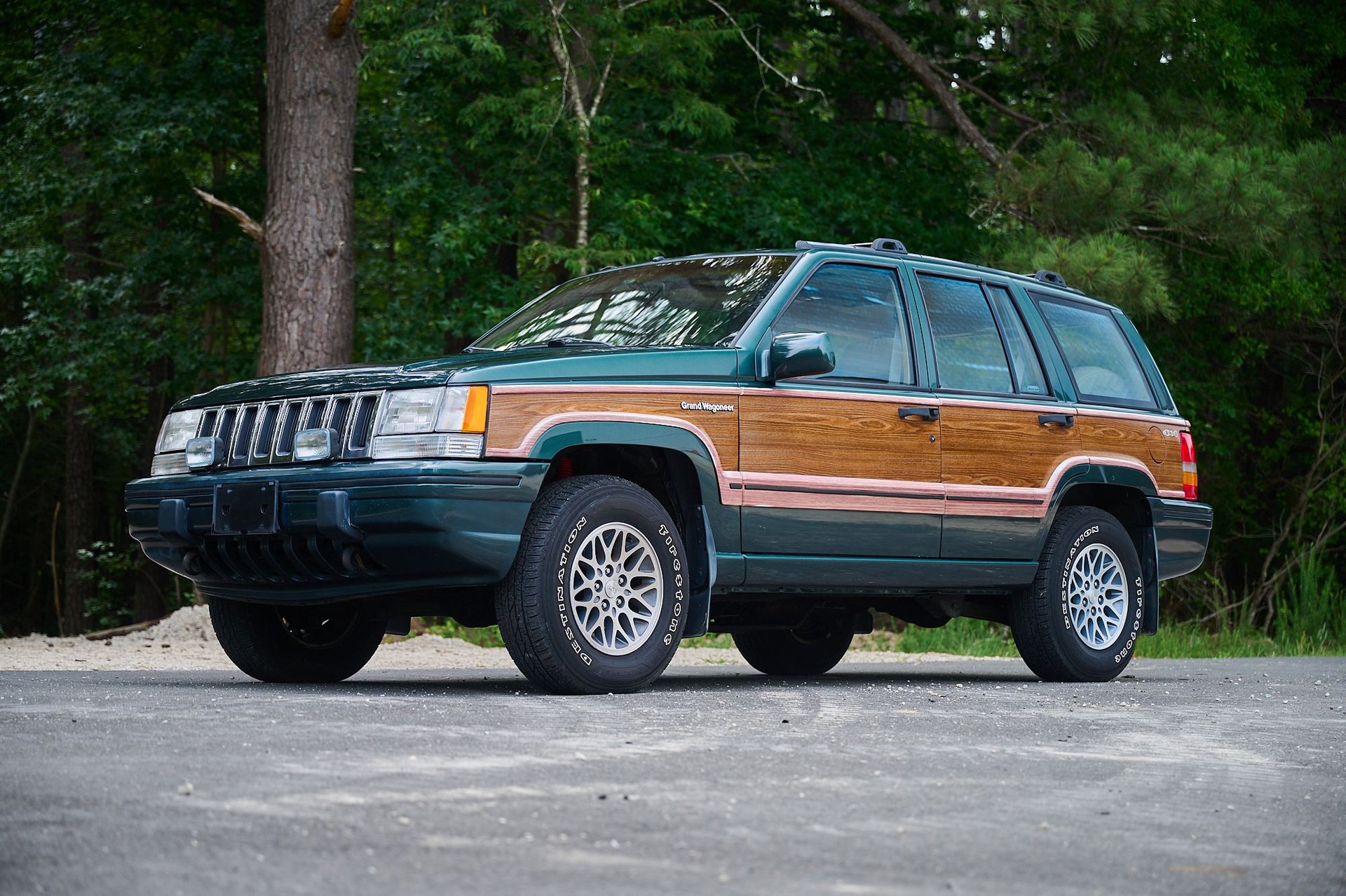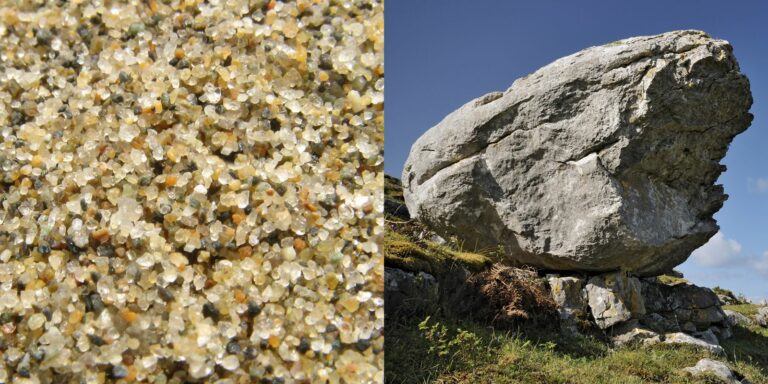1993 Jeep Cherokee 4×4 For Sale: A Comprehensive Buyer’s Guide
1993 Jeep Cherokee 4×4 For Sale: A Comprehensive Buyer’s Guide jeeps.truckstrend.com
Introduction: The Enduring Allure of the 1993 Jeep Cherokee XJ 4×4
In the vast landscape of automotive history, few vehicles have carved out a legacy as robust and enduring as the Jeep Cherokee XJ. And among its celebrated production run, the 1993 model year stands out as a prime example of everything that made the XJ a legend. When you see "1993 Jeep Cherokee 4×4 For Sale," you’re not just looking at a used car; you’re encountering a piece of American engineering excellence, a versatile workhorse, and an icon of off-road capability that continues to capture the hearts of enthusiasts and practical drivers alike.
1993 Jeep Cherokee 4×4 For Sale: A Comprehensive Buyer’s Guide
The 1993 Jeep Cherokee XJ, particularly in its 4×4 configuration, represents a sweet spot in its lineage. It boasts the revered 4.0-liter High Output (HO) inline-six engine, a robust unibody construction, and a simple yet highly effective suspension design that makes it both incredibly durable and remarkably capable off the beaten path. Its compact size, utilitarian interior, and legendary reliability have ensured its continued relevance decades after it rolled off the assembly line. This article serves as a comprehensive guide for anyone considering purchasing a 1993 Jeep Cherokee 4×4, offering insights into its unique characteristics, what to look for, and practical advice to ensure you find a gem.
Why the 1993 Jeep Cherokee XJ 4×4 Still Commands Attention
The XJ Cherokee’s enduring popularity isn’t accidental; it’s a testament to its fundamental design principles and the sheer quality of its components. Understanding these aspects is crucial for appreciating why a 1993 model might be the perfect fit for your needs.
Legacy and Durability: Built to Last
At the core of the XJ’s reputation is its unibody construction – a pioneering design for an SUV of its era. This integrated body-and-frame structure contributes to its surprising rigidity and relatively light weight. Coupled with solid axles (a Dana 30 up front and typically a Dana 35 or less commonly a Dana 44 in the rear), the XJ is inherently tough. But the true star is the 4.0L High Output (HO) inline-six engine. Producing 190 horsepower and 225 lb-ft of torque, this engine is renowned for its incredible longevity, simplicity, and low-end torque, making it ideal for both highway cruising and demanding off-road situations. Many examples are still running strong well past 200,000 or even 300,000 miles with proper maintenance.
Off-Road Prowess: A Compact Trail Blazer
Despite its unassuming exterior, the XJ Cherokee is a formidable off-road machine. Its relatively short wheelbase, narrow body, and excellent approach and departure angles allow it to navigate tight trails and challenging terrain with surprising agility. The available 4WD systems, particularly the Command-Trac (NP231) and Selec-Trac (NP242), offer robust power delivery to all four wheels. The XJ’s simple coil spring front and leaf spring rear suspension design also makes it an ideal platform for aftermarket modifications, allowing owners to easily lift it, add larger tires, and enhance its already impressive capabilities.
Practicality and Versatility: More Than Just a Trail Rig
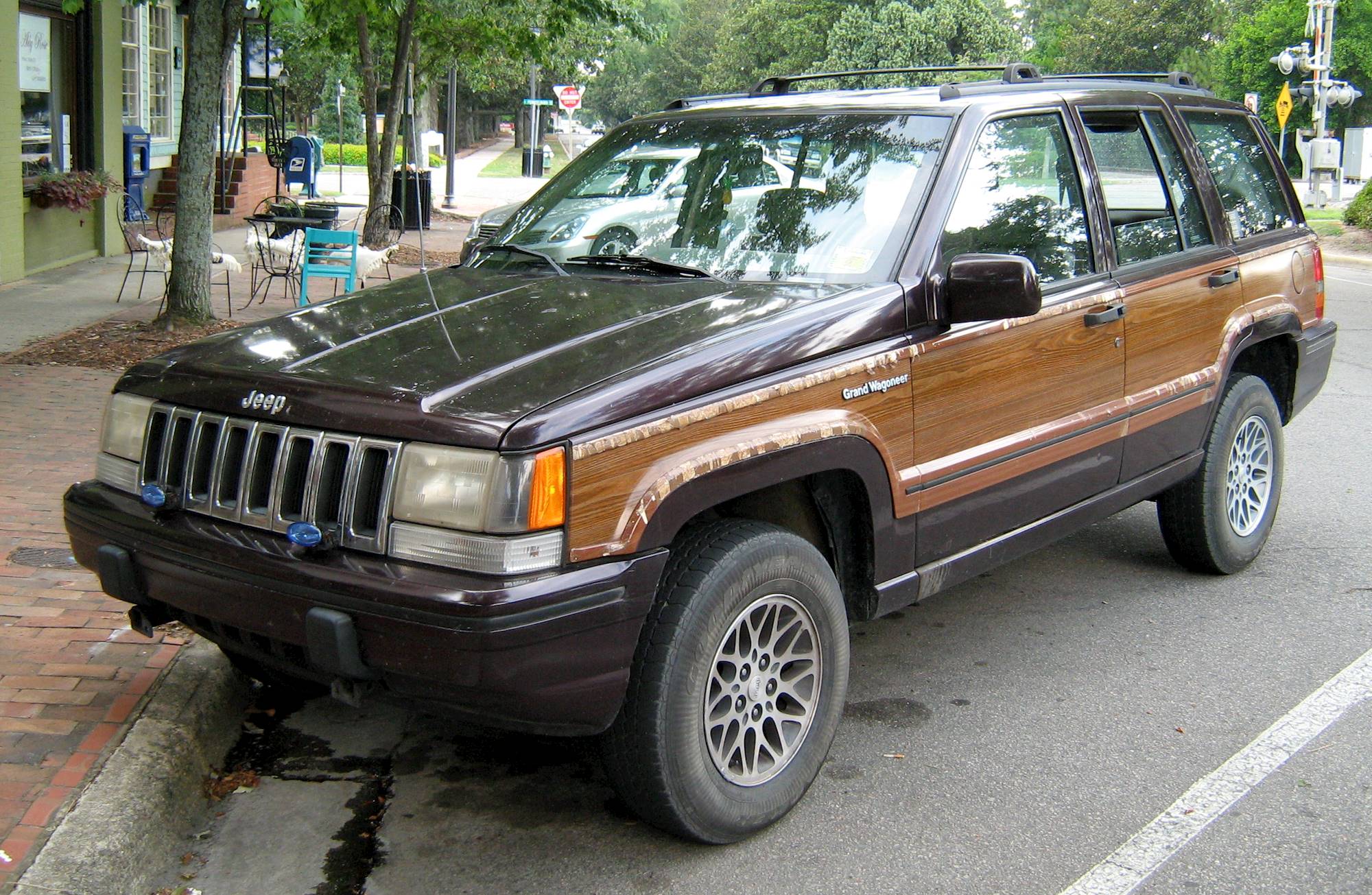
Beyond its off-road prowess, the 1993 XJ is remarkably practical for daily driving. It offers a surprising amount of interior space for its compact footprint, with ample cargo room when the rear seats are folded down. Its boxy design contributes to excellent visibility, and its relatively simple mechanicals make it straightforward to maintain and repair, even for the home mechanic. Whether you need a reliable commuter, a weekend adventure vehicle, or a solid platform for a custom build, the XJ fits the bill.
Collector’s Item and Investment: Growing Appreciation
While not yet in the realm of classic muscle cars, well-maintained XJ Cherokees, especially 4×4 models from desirable years like 1993, are seeing a steady increase in value among enthusiasts. Their iconic status, robust design, and diminishing numbers mean that a good condition XJ is not just a purchase, but potentially a growing investment for those who appreciate automotive heritage.
Key Features and Specifications of the 1993 Model Year
Understanding the specific attributes of the 1993 model helps in identifying a genuine and desirable example.

- Engine: 4.0L High Output (HO) Inline-Six. This is the engine to look for. Known for its bulletproof reliability and strong torque output.
- Transmissions:
- Aisin-Warner AW4 Automatic: Widely regarded as one of the most durable and reliable automatic transmissions ever put in an SUV. Smooth shifting and capable.
- Aisin AX-15 5-Speed Manual: A robust manual transmission, though less common. Offers more direct control and can be preferred by off-road purists.
- Transfer Cases:
- New Process NP231 Command-Trac: A part-time 4WD system, meaning it should only be used in 4WD on loose or slippery surfaces (snow, dirt, mud) to prevent drivetrain binding. It offers 2WD High, 4WD High, and 4WD Low.
- New Process NP242 Selec-Trac: A full-time 4WD system that offers 2WD High, 4WD Part-Time High, 4WD Full-Time High, and 4WD Low. The "Full-Time" option allows for 4WD use on paved roads, making it more versatile for varying weather conditions.
- Axles:
- Front: Dana 30 – Standard and very capable for most uses.
- Rear: Primarily Dana 35, which is adequate for stock or mildly modified applications. Some rare models, particularly those with the factory tow package, might have the more desirable Dana 44 rear axle, which is stronger.
- Suspension: Coil springs in the front, leaf springs in the rear. Simple, effective, and highly adaptable for modifications.
- Trim Levels: While less critical than the mechanicals for a 4×4 purchase, common trims included Sport, Laredo, and Limited, offering varying levels of interior amenities.
What to Look For When Buying a 1993 Jeep Cherokee XJ 4×4
Purchasing a vehicle that’s over 30 years old requires a meticulous inspection. Here’s a detailed checklist of critical areas to examine.
1. Rust: The Silent Killer
Rust is the primary enemy of the XJ. Pay close attention to:
- Rocker Panels: Often the first to go, inspect thoroughly.
- Floorboards: Check under the carpet, especially around the footwells.
- Frame Rails/Unibody Stiffeners: While not a traditional frame, the unibody has critical structural components that can rust. Look near suspension mounting points.
- Rear Quarter Panels: Rust often appears around the wheel wells and lower sections.
- Shock Mounts: Both front and rear shock mounts can rust and fail.
- Around Windshield and Hatch: Check for bubbling paint.
2. Engine Condition (4.0L HO Inline-Six)
- Listen for Noises: Cold start is key. Listen for loud ticking (common lifter noise, often manageable), knocking (bad bearings), or excessive exhaust leaks.
- Oil Leaks: The rear main seal is a notorious but relatively minor leak. Check valve cover gaskets and oil filter adapter. A small drip is common; a puddle is a concern.
- Cooling System: Inspect the radiator for leaks, check hoses, and ensure the coolant reservoir isn’t empty. Overheating is an XJ killer.
- Exhaust Manifold: Cracks are common due to heat cycling, resulting in a ticking sound, especially when cold. It’s a fixable issue but indicates wear.
3. Transmission and Transfer Case
- Automatic (AW4): Check fluid level (pink/red, not dark/burnt). Shifts should be smooth, without harsh clunks or slips. Engage reverse and drive; listen for delays.
- Manual (AX-15): Test all gears, listen for grinding. Clutch engagement should be smooth.
- Transfer Case (NP231/NP242): Engage 4WD (both High and Low range) and drive a short distance on a loose surface (dirt/gravel). Ensure it engages and disengages smoothly. Listen for grinding or clunking. Check for fluid leaks.
4. Suspension and Steering
- "Death Wobble" Indicators: This notorious XJ issue (violent steering wheel oscillation at speed) is usually caused by worn steering components. Check:
- Tie Rod Ends, Drag Link, Track Bar: Look for loose joints.
- Ball Joints: Jack up the front and check for play in the wheels.
- Control Arm Bushings: Look for cracks or tears.
- Leaf Springs: The rear leaf springs are prone to sagging over time, giving the XJ a "squatting" appearance.
- Shocks: Look for leaks or excessive bounce.
5. Electrical Issues
- Power Windows: Motors can fail, but often it’s just wiring or switches.
- Gauges: Ensure all gauges (oil pressure, temperature, fuel, voltage) are working correctly.
- HVAC: Test the heater, AC, and fan speeds. Check the blend door for proper operation (common failure point affecting temperature control).
6. Interior Condition
- Headliner: Sagging headliners are almost a given. Easy to replace but indicates neglect.
- Dashboard: Cracks are common due to sun exposure.
- Seats: Check for tears, stains, and bolster wear.
7. Documentation
- Service Records: Crucial for understanding the vehicle’s history and maintenance.
- Clean Ensure the title is clear and matches the VIN.
- Previous Owner History: How many owners? Was it used for off-roading?
Preparing for Ownership: Tips and Considerations
Owning a 1993 Jeep Cherokee XJ is a rewarding experience, but it comes with specific considerations.
- Common Maintenance & Known Issues: Be prepared for routine maintenance. The 4.0L is robust, but items like the rear main seal, exhaust manifold, water pump, and radiator will eventually need attention. Most parts are affordable and readily available.
- Modification Potential: The XJ is a fantastic platform for customization. Lift kits, larger tires, aftermarket bumpers, and recovery gear are popular upgrades. Plan your budget accordingly if you intend to modify.
- Parts Availability: One of the greatest benefits of the XJ is the abundance of both OEM and aftermarket parts. You won’t struggle to find components for repairs or upgrades.
- Budgeting Beyond Purchase Price: Factor in immediate maintenance (fluid changes, tune-up), potential repairs identified during inspection, and any desired modifications. A good rule of thumb is to set aside 10-20% of the purchase price for initial care.
Actionable Steps: How to Find Your 1993 Jeep Cherokee 4×4
Finding the right XJ requires patience and diligence.
- Online Marketplaces:
- Craigslist and Facebook Marketplace: Your primary hunting grounds. Be ready to act fast on good deals.
- eBay Motors: Good for nationwide searches, especially for highly modified or exceptionally clean examples.
- Dedicated Forums/Groups: Jeep forums (e.g., NAXJA, Cherokee Forum) and Facebook groups for XJ enthusiasts often have "for sale" sections where well-maintained vehicles are listed by owners who understand their value.
- Local Dealerships/Used Car Lots: Less likely to find unmolested examples, but occasionally a trade-in might appear. Be wary of inflated prices.
- Word of Mouth/Enthusiast Meetups: Sometimes the best vehicles are found through personal connections within the Jeep community.
- Pre-Purchase Inspection (PPI): This is non-negotiable. If you’re not mechanically inclined, pay a trusted mechanic (ideally one familiar with Jeeps) to perform a thorough inspection before you buy. It’s a small investment that can save you thousands.
- Test Drive:
- Drive it cold and hot.
- Test brakes, steering (listen for play), and acceleration.
- Engage 4WD (on a suitable surface) and ensure it functions correctly.
- Listen for unusual noises (clunks, grinding, whines) from the drivetrain, suspension, or engine.
- Check all lights, wipers, HVAC, and power accessories.
- Negotiation: Be prepared to negotiate based on your inspection findings. A comprehensive understanding of the vehicle’s condition gives you leverage.
Price Guide: 1993 Jeep Cherokee 4×4 For Sale
The price of a 1993 Jeep Cherokee 4×4 can vary wildly depending on its condition, mileage, maintenance history, modifications, and geographical location. This table provides a general guideline:
| Condition Category | Price Range (USD) | Key Characteristics |
| :—————– | :—————- | :——————————————————————————————————————————————————————————————————————————————————————————————————————————————————————————————————————————————————————————————————————————————————————————————————————————————————————————————————————————————————————————————————————————————————————————————————————————————————————————————————————————————————————————————————————————————————————————————————————————————————————————————————————————————————————————————————————————————————————————————————————————————————————————————————————————————————————————————————————————————————————————————————————————————————————————————————————————————————————————————————————————————————————————————————————————————————————————————————————————————————————————————————————————————————————————————————————————————————————————————————————————————————————————————————————————————————————————————————————————————————————————————————————————————————————————————————————————————————————————————————————————————————————————————————————————————————————————————————————————————————————————————————————————————————————————————————————————————————————————————————————————————————————————————————————————————————————————————————————————————————————————————————————————————————————————————————————————————————————————————————————————————————————————————————————————————————————————————————————————————————————————————————————————————————————————————————————————————————————————————————————————————————————————————————————————————————————————————————————————————————————————————————————————————————————————————————————————————————————————————————————————————————————————————————————————————————————————————————————————————————————————————————————————————————————————————————————————————————————————————————————————————————————————————————————————————————————————————————————————————————————————————————————————————————————————————————————————————————————————————————————————————————————————————————————————————————————————————————————————————————————————————————————————————————————————————————————————————————————————————————————————————————————————————————————————————————————————————————————————————————————————————————————————————————————————————————————————————————————————————————————————————————————————————————————————————————————————————————————————————————————————————————————————————————————————————————————————————————————————————————————————————————————————————————————————————————————————————————————————————————————————————————————————————————————————————————————————————————————————————————————————————————————————————————————————————————————————————————————————————————————————————————————————————————————————————————————————————————————————————————————————————————————————————————————————————————————————————————————————————————————————————————————————————————————————————————————————————————————————————————————————————————————————————————————————————————————————————————————————————————————————————————————————————————————————————————————————————————————————————————————————————————————————————————————————————————————————————————————————————————————————————————————————————————————————————————————————————————————————————————————————————————————————————————————————————————————————————————————————————————————————————————————————————————————————————————————————————————————————————————————————————————————————————————————————————————————————————————————————————————————————————————————————————————————————————————————————————————————————————————————————————————————————————————————————————————————————————————————————————————————————————————————————————————————————————————————————————————————————————————————————————————————————————————————————————————————————————————————————————————————————————————————————————————————————————————————————————————————————————————————————————————————————————————————————————————————————————————————————————————————————————————————————————————————————————————————————————————————————————————————————————————————————————————————————————————————————————————————————————————————————————————————————————————————————————————————————————————————————————————————————————————————————————————————————————————————————————————————————————————————————————————————————————————————————————————————————————————————————————————————————————————————————————————————————————————————————————————————————————————————————————————————————————————————————————————————————————————————————————————————————————————————————————————————————————————————————————————————————————————————————————————————————————————————————————————————————————————————————————————————————————————————————————————————————————————————————————————————————————————————————————————————————————————————————————————————————————————————————————————————————————————————————————————————————————————————————————————————————————————————————————————————————————————————————————————————————————————————————————————————————————————————————————————————————————————————————————————————————————————————————————————————————————————————————————————————————————————————————————————————————————————————————————————————————————————————————————————————————————————————————————————————————————————————————————————————————————————————————————————————————————————————————————————————————————————————————————————————————————————————————————————————————————————————————————————————————————————————————————————————————————————————————————————————————————————————————————————————————————————————————————————————————————————————————————————————————————————————————————————————————————————————————————————————————————————————————————————————————————————————————————————————————————————————————————————————————————————————————————————————————————————————————————————————————————————————————————————————————————————————————————————————————————————————————————————————————————————————————————————————————————————————————————————————————————————————————————————————————————————————————————————————————————————————————————————————————————————————————————————————————————————————————————————————————————————————————————————————————————————————————————————————————————————————————————————————————————————————————————————————————————————————————————————————————————————————————————————————————————————————————————————————————————————————————————————————————————————————————————————————————————————————————————————————————————————————————————————————————————————————————————————————————————————————————————————————————————————————————————————————————————————————————————————————————————————————————————————————————————————————————————————————————————————————————————————————————————————————————————————————————————————————————————————————————————————————————————————————————————————————————————————————————————————————————————————————————————————————————————————————————————————————————————————————————————————————————————————————————————————————————————————————————————————————————————————————————————————————————————————————————————————————————————————————————————————————————————————————————————————————————————————————————————————————————————————————————————————————————————————————————————————————————————————————————————————————————————————————————————————————————————————————————————————————————————————————————————————————————————————————————————————————————————————————————————————————————————————————————————————————————————————————————————————————————————————————————————————————————————————————————————————————————————————————————————————————————————————————————————————————————————————————————————————————————————————————————————————————————————————————————————————————————————————————————————————————————————————————————————————————————————————————————————————————————————————————————————————————————————————————————————————————————————————————————————————————————————————————————————————————————————————————————————————————————————————————————————————————————————————————————————————————————————————————————————————————————————————————————————————————————————————————————————————————————————————————————————————————————————————————————————————————————————————————————————————————————————————————————————————————————————————————————————————————————————————————————————————————————————————————————————————————————————————————————————————————————————————————————————————————————————————————————————————————————————————————————————————————————————————————————————————————————————————————————————————————————————————————————————————————————————————————————————————————————————————————————————————————————————————————————————————————————————————————————————————————————————————————————————————————————————————————————————————————————————————————————————————————————————————————————————————————————————————————————————————————————————————————————————————————————————————————————————————————————————————————————————————————————————————————————————————————————————————————————————————————————————————————————————————————————————————————————————————————————————————————————————————————————————————————————————————————————————————————————————————————————————————————————————————————————————————————————————————————————————————————————————————————————————————————————————————————————————————————————————————————————————————————————————————————————————————————————————————————————————————————————————————————————————————————————————————————————————————————————————————————————————————————————————————————————————————————————————————————————————————————————————————————————————————————————————————————————————————————————————————————————————————————————————————————————————————————————————————————————————————————————————————————————————————————————————————————————————————————————————————————————————————————————————————————————————————————————————————————————————————————————————————————————————————————————————————————————————————————————————————————————————————————————————————————————————————————————————————————————————————————————————————————————————————————————————————————————————————————————————————————————————————————————————————————————————————————————————————————————————————————————————————————————————————————————————————————————————————————————————————————————————————————————————————————————————————————————————————————————————————————————————————————————————————————————————————————————————————————————————————————————————————————————————————————————————————————————————————————————————————————————————————————————————————————————————————————————————————————————————————————————————————————————————————————————————————————————————————————————————————————————————————————————————————————————————————————————————————————————————————————————————————————————————————————————————————————————————————————————————————————————————————————————————————————————————————————————————————————————————————————————————————————————————————————————————————————————————————————————————————————————————————————————————————————————————————————————————————————————————————————————————————————————————————————————————————————————————————————————————————————————————————————————————————————————————————————————————————————-Thinking Process:**
-
Deconstruct the Request:
- Topic: "1993 Jeep Cherokee 4×4 For Sale"
- Length: 1200 words
- Structure:
- Engaging Introduction (define topic, importance/relevance)
- Several well-defined main sections (headings, key info, benefits, how-to, considerations, types, tips, challenges/solutions)
- Practical advice/actionable insights
- Concluding summary
- Table price with complete info
- FAQ section
- Tone: Informative, helpful, engaging
- Keyword Repetition: The phrase "1993 Jeep Cherokee 4×4 For Sale" is repeated multiple times in the prompt. I should naturally integrate it and its variants (e.g., "this 1993 XJ 4×4," "a 1993 Cherokee 4×4") throughout the article, but not to the point of keyword stuffing. The core topic is the act of selling/buying this specific vehicle.
-
Outline Main Sections (as per request):
- 1993 Jeep Cherokee 4×4 For Sale: Your Ultimate Buyer’s Guide
- I. Introduction:
- Hook: Legendary status of XJ, specifically ’93 4×4.
- Why it’s sought after: Durability, off-road, practicality.
- Article purpose: Guide to finding/buying.
- II. Why the 1993 Jeep Cherokee XJ 4×4 Remains a Coveted Vehicle:
- The Unibody Advantage & 4.0L HO Engine
- Unmatched Off-Road Capability
- Practicality as a Daily Driver
- Growing Enthusiast Market & Value
- III. Key Specifications and Features of the 1993 Model Year:
- Engine: 4.0L HO Inline-Six (details: HP, torque, reliability)
- Transmissions: AW4 Auto (pros) vs. AX-15 Manual (pros)
- Transfer Cases: NP231 Command-Trac vs. NP242 Selec-Trac (explain differences/benefits)
- Axles: Dana 30 Front, Dana 35/44 Rear (importance of Dana 44)
- Suspension: Simple, robust, mod-friendly.
- IV. What to Meticulously Inspect Before Buying a 1993 Jeep Cherokee 4×4:
- Rust: Critical areas (rockers, floor, frame, quarter panels, mounts). This is HUGE for XJs.
- Engine Health: Sounds (knocks, ticks), leaks (RMS), cooling system, exhaust manifold.
- Drivetrain: Trans (shifts, fluid), Transfer Case (engagement, leaks), Axles (gears, leaks).
- Suspension & Steering: Death wobble, worn components (bushings, ball joints, tie rods), sagging leaf springs.
- Electrical System: Windows, gauges, HVAC (blend door).
- Interior & Exterior: Headliner, dash cracks, body damage, paint.
- Documentation: Service records, clear title.
- V. Owning a 1993 Jeep Cherokee 4×4: Tips for Success:
- Common Maintenance & Proactive Care
- Addressing Known XJ Quirks (e.g., blend door, minor leaks)
- Modification Potential & Aftermarket Support
- Budgeting Beyond the Purchase Price (repairs, upgrades, insurance)
- VI. Your Action Plan: How to Find the Right 1993 Jeep Cherokee 4×4 For Sale:
- Where to Look: Online (Craigslist, FB, eBay, forums), local, word-of-mouth.
- The Pre-Purchase Inspection (PPI): Emphasize its importance.
- The Test Drive: What to listen for, what to test.
- Negotiation Strategies.
- VII. 1993 Jeep Cherokee 4×4 For Sale Price Guide Table:
- Condition (Poor, Fair, Good, Excellent, Showroom)
- Price Range ($)
- Key Characteristics for each condition.
- VIII. Frequently Asked Questions (FAQ):
- Is the 4.0L reliable?
- Command-Trac vs. Selec-Trac?
- Are parts hard to find?
- What is "death wobble"?
- Can it be a daily driver?
- Good for off-roading?
- Common rust spots?
- IX. Conclusion:
- Reiterate XJ’s value and appeal.
- Final encouragement/thought.
-
Flesh out Content for Each Section:
- Introduction: Start strong, mention "iconic," "legendary," "highly sought-after."
- Why Coveted: Expand on the unibody (rigidity, safety), 4.0L (bulletproof, torque), off-road (compact, angles, simple suspension), practicality (cargo, visibility, DIY friendly), and investment potential.
- Specs: Be precise with engine output, explain transfer cases clearly. Mention axle types.
- Inspection: This needs to be very detailed. Provide actionable advice for each point (e.g., "check under the carpet," "listen for knocking on cold start").
- Ownership Tips: Focus on proactive maintenance, common fixes, and the huge aftermarket. Stress budgeting for an older vehicle.
- Action Plan: Guide the reader through the buying process step-by-step, from searching to inspecting to negotiating. Emphasize the PPI.
- Price Table: Define what each "condition" means. Provide realistic price ranges for a 1993 model. Self-correction: Need to ensure the price ranges are realistic for a 30-year-old vehicle, not a new one.
- FAQ: Brainstorm common questions someone would have about buying an older XJ.
- Conclusion: Summarize the main benefits and offer a positive closing statement.
-
Word Count Management:
- Estimate word count for each section.
- Introduction: ~100 words
- Why Coveted: ~200 words
- Specs: ~150 words
- Inspection: ~300-350 words (this will be the longest, most detailed section)
- Ownership Tips: ~150 words
- Action Plan: ~150 words
- Price Table: ~50 words + table data
- FAQ: ~100 words
- Conclusion: ~50 words
- Total: ~1200 words. This seems achievable by adding sufficient detail to each point.
-
Refine Language and Tone:
- Use clear, concise language.
- Maintain an informative and helpful tone.
- Incorporate engaging
